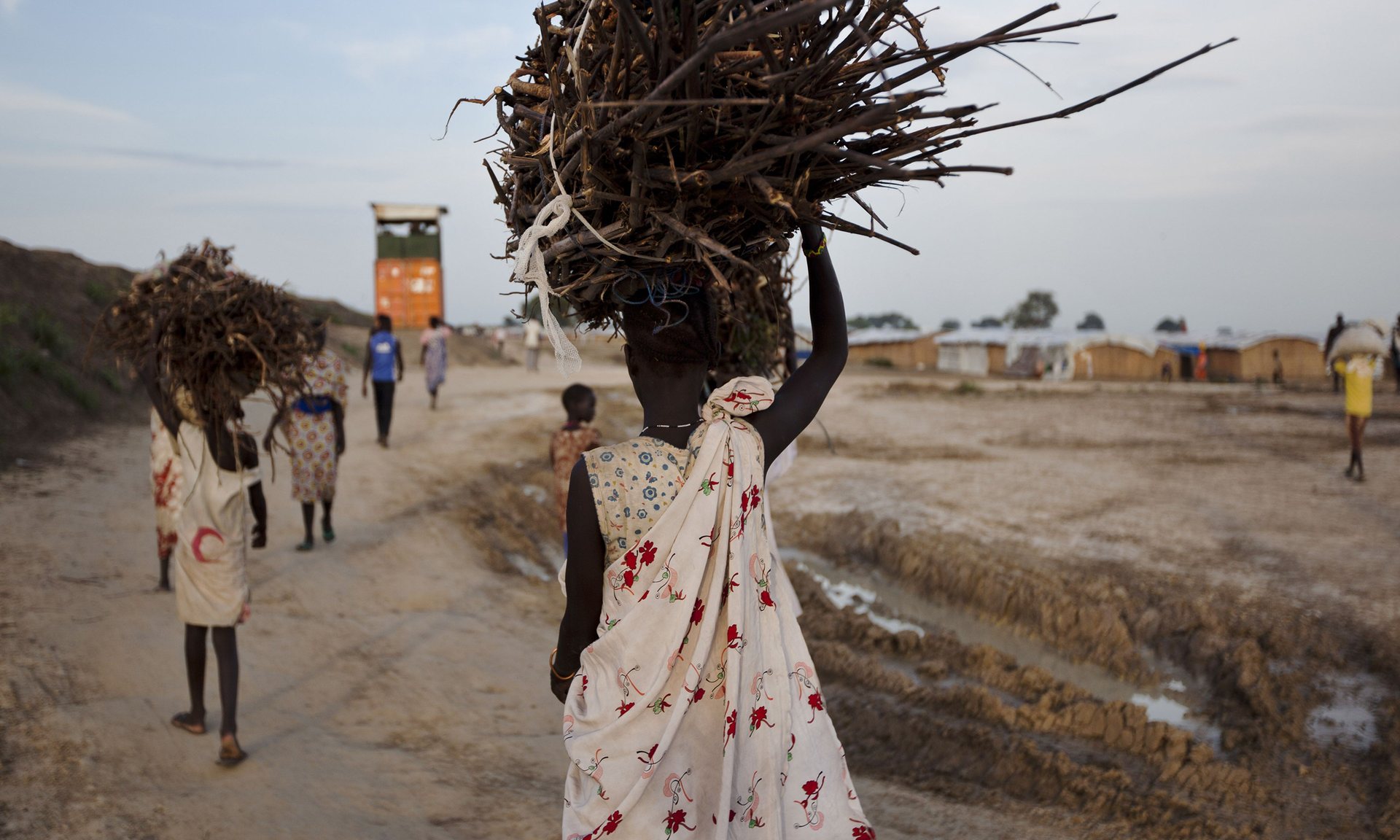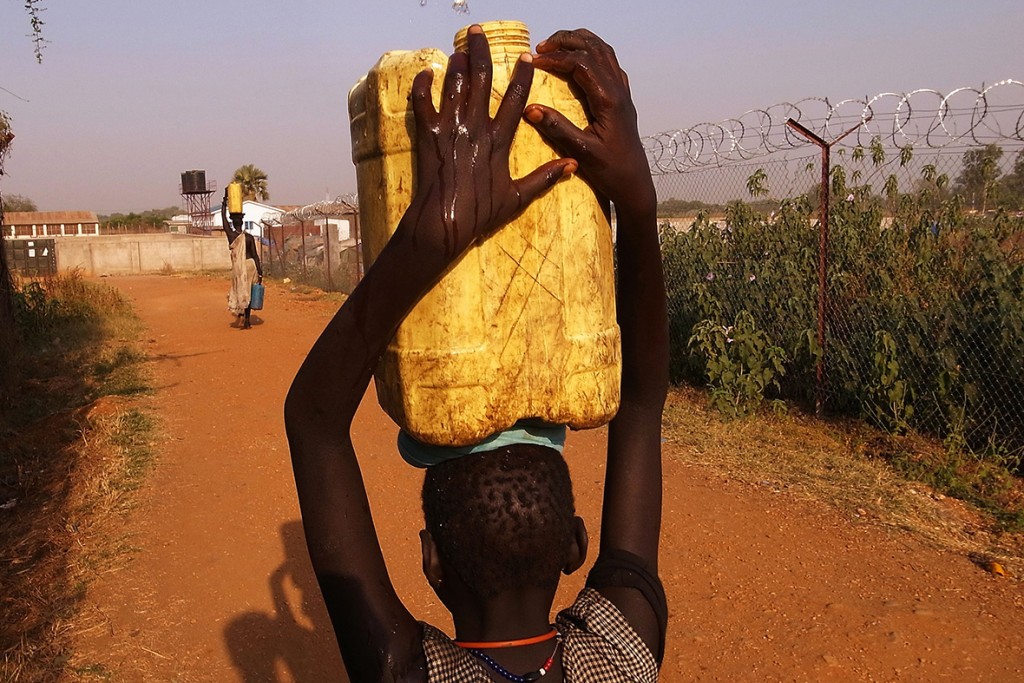For weeks, popular protests have rocked Sudan, with thousands of citizens coming out to decry the high cost of bread and call for the downfall of the regime of President Omar al-Bashir, who has been in power since 1989.
Echoing the 2011 Arab Spring in neighbouring Libya and Egypt, demonstrations have spread across the country, from agricultural towns and old industrial centres to major cities like the capital, Khartoum. With the governing system already weakened by years of instability, some analysts say if al-Bashir falls it could bring down the state as a whole.
Al-Bashir, wanted by the International Criminal Court for allegedly committing genocide in Sudan’s western Darfur region, has responded with a crackdown by security forces that human rights groups say resulted in the deaths of dozens of protesters, although official figures are lower. He is holding tight to power, but the protesters won’t back down either, saying the regime’s time is up.
As a strategically located oil-producing nation, Sudan is crucial to the volatile geopolitics of the Red Sea and the Horn of Africa. But it reels from a sunken economy, widespread corruption, and protracted conflicts and humanitarian crises.
At least 5.5 million people are in need of assistance and two million internally displaced – mostly in Darfur, and in the southern Blue Nile and South Kordofan states, where rebellions continue and a ceasefire has just expired. In 2018, the UN estimated $1 billion in aid was required to assist everyone in need.
As protests continue – security forces reportedly fired on protesters in Sudan’s second city of Omdurman on Wednesday – it’s unclear what impact the political upheaval will have on those already most vulnerable. Here’s our briefing on recent events in Sudan, and how the turbulence could impact the country.
Why did the protests start?
The immediate cause of the protests, which began on 19 December 2018, was the slashing of bread subsidies in the northern Nile-side town of Atbara. Citizens saw the price of bread triple overnight and took to the streets, burning down the ruling National Congress Party (NCP) headquarters, and breaking into stores to distribute grain to the people.
The protests quickly spread across the rural north, soon reaching the major cities of Port Sudan, Wad Madani, and Khartoum. Protesters called for an end to al-Bashir’s 29-year reign, which has been marked by near-constant civil war, extreme hunger and famine in 1993 and 1998, and persistent economic malaise following the secession of the oil-rich south in 2011.
What’s unique about these protests?

Photograph: Tristan Mcconnell/AFP/Getty Images
Demonstrations started in the riverine north, which is traditionally al-Bashir’s base, a departure from historical protest movements that typically began in cosmopolitan Khartoum. These protests are also different because of their longevity and geographic scope.
In 2013, Khartoum erupted in protests against the lifting of fuel subsidies, resulting in a furious response by security forces who killed nearly 200 people. Since then, economic conditions have only worsened as the country suffers from acute shortages of cash and fuel.
“[The regime] has clearly run out of political and economic ideas,” said Horn of Africa expert Harry Verhoeven. “Since 2011 people have known the time is up, it’s a question of when rather than if. What we’re seeing right now might not be the final chapter, but we are nearing the end.”
Who are the protesters and what do they want?
The protesters are a mix of rural people unable to afford basic goods and an urban middle class including students, university professors, and doctors demanding political overhaul. These groups are not necessarily natural partners, Magdi el Gizouli, a Sudanese analyst with the Rift Valley Institute, told IRIN.
El Gizouli points to an attempt by urban protesters to downplay the importance of high food costs in rural areas. “The middle class likes to speak of rights and freedoms. They don’t like to speak the language of bread,” he said. “This contradiction is totally unnecessary. Why do you need to divide these two things? Why do you need to say bread is different from freedom?”
Despite this urban-rural divide, the protesters now have a semblance of structure under the emerging Sudanese Professionals Association, which has taken on an organisational role. In a petition, the Association has called for a “transitional government of technocrats with a mandate agreed upon by all segments of Sudanese society”.
How has the government responded?
Initially, al-Bashir’s forces responded brutally, beating protesters and firing tear gas and live ammunition, which caused the deaths of at least 37 protesters in December, according to Amnesty International.
But the level of deadly violence has apparently lessened since then, with Human Rights Watch putting the total death toll at around 40. Sudan’s government says 19 people have been killed.
That said, bellicose rhetoric from top officials suggests al-Bashir won’t go down without a fight, and Henry added that the regime is hardly playing nice. She pointed to reports of arrests (over 800 so far, according to the government) including of journalists, opposition politicians, and university professors.
Henry was especially concerned about 50 Darfuri students who she said were arrested, accused by authorities of having links to rebel groups, and held incommunicado. “The government rounded them up in these house raids. They won’t say where they are. There haven’t been any charges,” she said. “That worries me because Darfuri students are always beaten up and treated horribly, much worse than other groups of protesters.”
Is there a political solution?
The protests have led to a realignment of Sudanese politics. A collection of smaller parties, including some of al- Bashir’s Islamist former allies, have left the government and joined the protesters’ calls for the president to step down. More traditional opposition parties, as well as rebel groups from Darfur, Kordofan and Blue Nile, have likewise voiced support for the protests.
But many of these groups represent an old guard that lacks credibility among Sudan’s younger generation, who is in the streets. “Whatever way you look at it, [the protests] will move politics in Sudan a bit forward,” said el Gizouli. “But there’s no one with a plan.”
So far, al-Bashir shows no signs of stepping down in the face of the defections, and there is little evidence the NCP itself is cracking: no major security figures have joined the protests.
However, continued support for al-Bashir isn’t a given. He essentially relies on a large patronage network to keep his power base behind him. And as the country is almost broke, it has become harder for him to keep everyone in line.
With no solution in sight, one thing is clear, according to Henry of Human Rights Watch: “The longer the protests go on, the higher the death and injury toll.”
How is the international community reacting?
Al-Bashir is known for his wily approach to foreign relations, seeking out support wherever he can. But the international community has been hands-off in recent weeks.
Once a friend of Iran and a foe of the West, in recent years al-Bashir has simultaneously courted Saudi Arabia, Qatar, the United States, Russia, and even Syria’s Bashar al-Assad. Analysts say Egypt and the Gulf states would abhor an Arab Spring-style revolution in Sudan, but so far no Arab state has bailed al-Bashir out with an influx of cash – something he’s relied on in the past.

Otherwise, there has been a smattering of statements calling for restraint from Western powers, the UN, and the African Union. The East African regional bloc IGAD, itself dominated by autocrats who fear popular uprisings, has said nothing. For el Gizouli, the way forward must come from within. “The decisive thing is how the street continues to operate and how the security forces respond,” he said.
What will happen next?
According to Verhoeven, the best-case scenario to resolve the crisis would see al-Bashir step aside and go into exile while an internationally backed coalition government leads the country until fresh elections. But convincing al-Bashir to go is a tall order. Sudanese billionaire Mo Ibrahim suggested the ICC should think about dropping its charges against al-Bashir to encourage him to step aside with the guarantee he won’t be prosecuted.
But removing al-Bashir may do little to change the structure of the state if the security apparatus holds onto power, similar to Abdel Fattah el-Sisi’s Egypt. Furthermore, the Sudanese state is weak after decades of war and sanctions.
“Structurally speaking, where Sudan is in this moment in time is not very different from [the Democratic Republic of] Congo in the mid 90s, or Somalia in the late 80s,” Verhoeven said, referring to periods preceding massive outbreaks of violence in those countries. “The system has become so weak and the state doesn’t require very much to come crashing down, so when the leader falls, it’s not just a person or a party that falls, it’s the state as a whole.”
It is easy to see how state collapse following a revolution could result in a situation like neighbouring Libya, where atrocities, warlordism, and terrorism have spread.
Verhoeven points out that grudges and rivalries run deep in Sudan, where there are many aggrieved groups who want to seek revenge. Al-Bashir’s regime has also mainstreamed elements of Islamist extremism, and the country is awash with weapons.
So far, the protests have had little discernible impact on humanitarian aid; the ICRC told IRIN that none of its humanitarian activities have been disrupted as a result. But short of state collapse, the unrest at Sudan’s centre will invariably have consequences in the periphery, where the majority of vulnerable, aid-dependent people reside.
With all eyes on the protests, a ceasefire announced by al-Bashir last year for the Darfur, South Kordofan, and Blue Nile conflict areas quietly expired on 1 January. As al-Bashir moves troops to deal with the protests, rebels may take the opportunity to launch new offensives. At the same time, al-Bashir may need to buy loyalty of various militia and military elite, giving those armed groups and leaders the funds to rearm, recruit, and re-engage with their own rivals in the hinterlands. Any uptick in fighting could reverse hard-won gains for aid workers trying to reach civilians in need.

